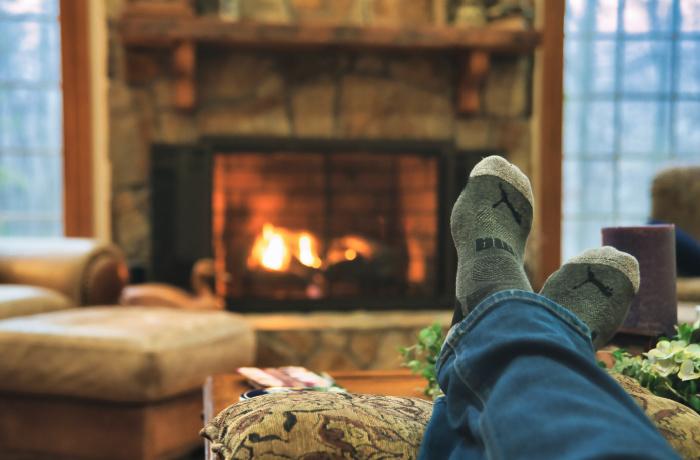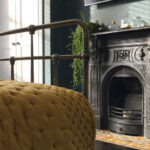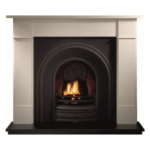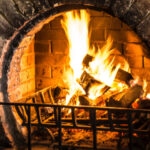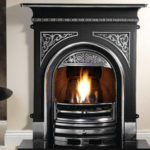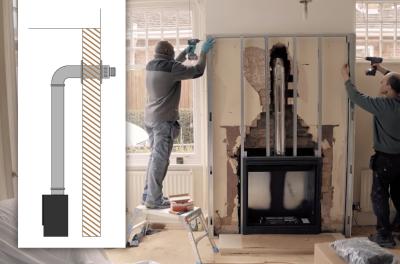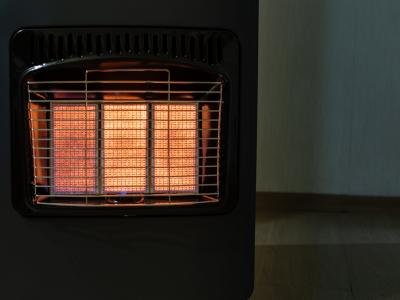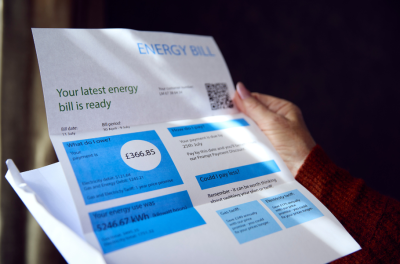We use cookies to improve your experience and our business. See our privacy/cookie policy or continue browsing to accept our use of cookies. View our cookie policy.
14 Tips to Get Your Fireplace Ready for Autumn and Winter
The leaves are falling and the temperature is dropping. With autumn and winter approaching, now is the time to get your fireplace up and running. If you want to make sure that your fireplace will perform at its best over the months ahead, read our 14 tips to getting your fireplace ready for autumn and winter now.
Clear clutter from around your fireplace
For many people, the summer months see an accumulation of items around the fireplace. Magazines, newspapers, odds and ends, bits and bobs.
Before you start using your fireplace again, make sure that all of these items are cleared well out of the way. You don’t want to light your first fire of the season only to find that stack of magazines is getting dangerously hot!
The same goes for any rugs or furnishings that you may have picked up over the summer. Ensure they are well clear of the hearth before you start using your fireplace again.
Check your carbon monoxide alarm
If you only do one thing on this list, do this. It’s vitally important for your safety that your carbon monoxide alarm is fully functional.
Whilst many carbon monoxide alarms feature in-built batteries that are designed to last for several years, you should always double check they are working - particularly if they have been sitting dormant during the summer months.
Should you have a carbon monoxide alarm with replaceable batteries, it’s advisable to put in a new set ahead of autumn and winter.
If you think it might be time to renew or upgrade your carbon monoxide alarm, take a look at this one from our partners at Trade Price Flues.
Have your chimney inspected and swept
If you don’t already have the contact details of your local chimney sweep, then go find one asap.
Before you attempt to light your first fire of the burning season, you should have a chimney sweep, inspect and clean your chimney.
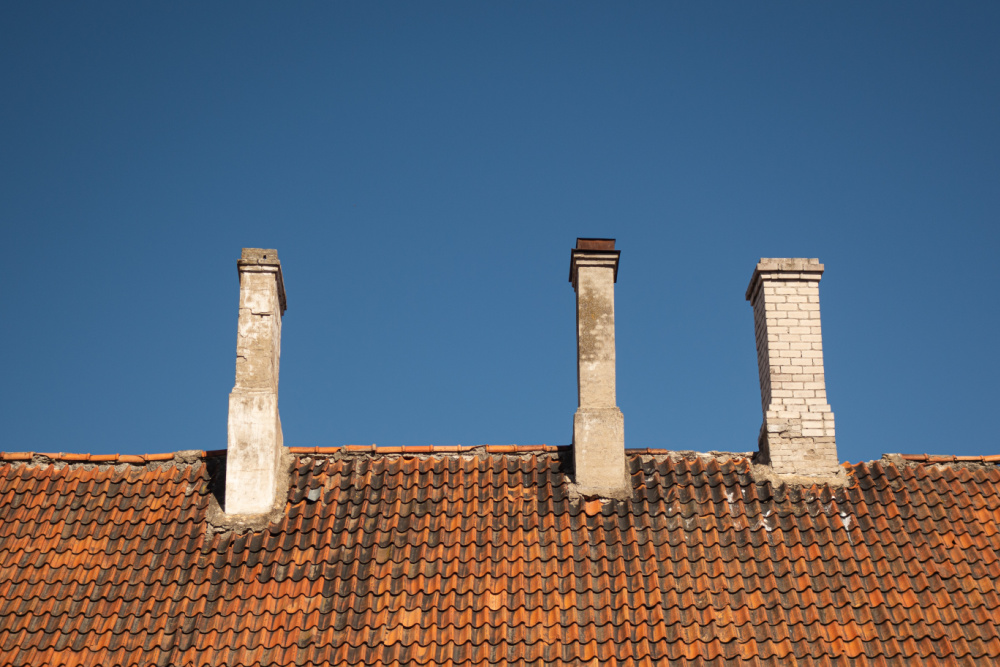
It’s recommended that your chimney should be swept at least once a year (or more if you use it a lot), and we strongly recommend that you use an experienced and qualified professional to do this.
Most chimney sweeps will conduct what is known as a ‘Level 1 Inspection’. This involves conducting a visual inspection of your chimney cavity using a torch. They’ll look for any obstructions such as birds nests or build ups of creosote. They will then undertake a full sweep of the chimney.
Guide - you can find out everything you need to know about chimney inspections and sweeping in our guide here.
Check that the chimney damper opens and closes
As part of many open fireplaces you’ll find a chimney damper. It’s the job of a damper to prevent warm air from the room from escaping up the chimney.
Think of it as being a sort of ‘door’ which can be opened or closed manually.
There are two main types of chimney damper:
- Throat damper - this closes the base of the chimney and is made of steel or cast iron and is usually opened and closed using a knob or rod that’s located on the front face of the fireplace.
- Top-mount damper - a top-mount damper sits on top of the chimney cap. So it seals the chimney from the very top. This type of damper is usually held in the open position using a spring. You use a controlling cable or handle to pull it closed.
Like any type of equipment that is hinged, chimney dampers can seize up if they are left unused for long periods of time.
So, it’s important that you check that your chimney damper can properly open and close before the autumn and winter months. If your chimney damper becomes sealed shut and you light a fire, this can lead to the ingress of smoke into your home which is a safety issue.
Whilst a chimney sweep will normally check the chimney damper as part of their inspection, it’s worth checking the chimney damper yourself for added reassurance.
Check for cracks and damage
You should visually inspect the outside of your chimney for any visible cracks or damage. It’s particularly important that you check the mortar. Crumbling or damp mortar can indicate more serious structural issues on the inside of the chimney cavity.
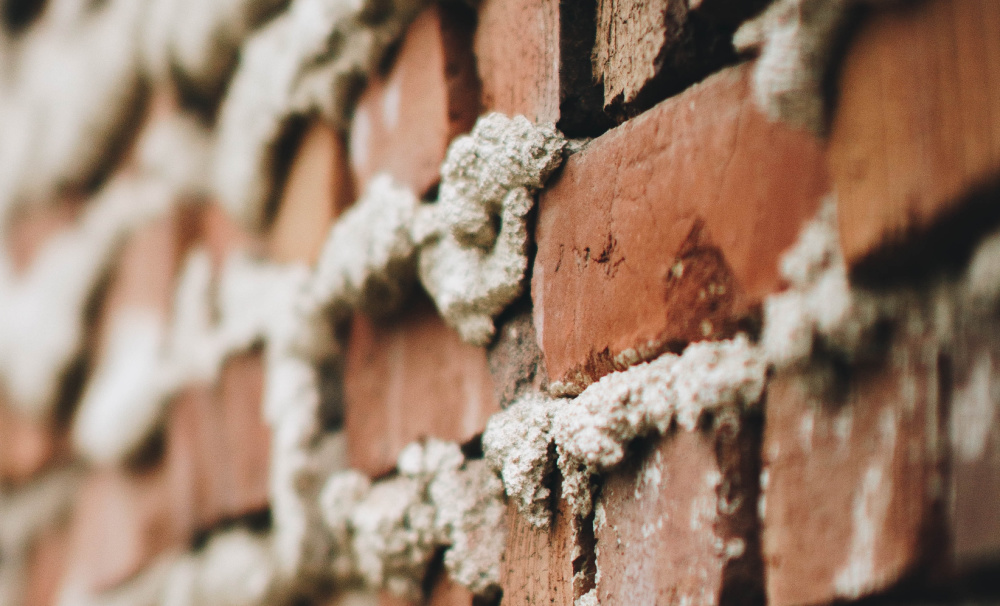
In addition to checking the outside of your chimney, have a detailed look at the chimney breast on the inside of your home. Again, if you spot any cracks, crumbling mortar or even stains on the plaster on the chimney breast (if it’s been plastered), then this could indicate structural issues.
Should you spot any issues, then you should call in the services of a professional mason.
Inspect the chimney cap
Sitting at the very top of the chimney, the chimney cap is particularly exposed to the elements and therefore vulnerable to damage and corrosion.
If you are using a chimney cap that includes a bird guard or protective screening, then you should check that this isn’t blocked up with dead leaves or other detritus. A blocked bird guard can impede the draw of your chimney, leading to poorly burning fires etc.

5" Push Fit Pot Hanger Rain Cap
Even more importantly, if your chimney cap doesn’t feature a bird guard, make sure you have one fitted. Birds nests and other critters making a home in chimney cavities are a leading cause of chimney fires.
Ensure the chimney isn’t obstructed by trees
Perhaps not an obvious tip, but one worth noting regardless. If your chimney is within the vicinity of any trees, you should check the branches are not encroaching upon the chimney.
Not only can trees affect the draw and performance of your chimney, but they can be a fire hazard too. Additionally, trees can also pose a structural risk to your chimney should they fall down during a storm.
Inspect the fireplace blower
Not every fireplace has a blower, but if yours does you should inspect it.
A fireplace blower is typically a fan that is mounted on the exterior of the fireplace (or inside the fireplace but away from the firebox) that is designed to blow hot air from the fire into the living space.
The main thing to check when inspecting a fireplace blower is the fan. Many fireplace blowers don’t have filters, so the fan can easily become clogged up with soot or other particulates.
Check that your fireplace tools are in good order
Yes, many fireplace tools may be made from cast iron or steel, but it’s still worth giving them a quick inspection before you start using your fireplace again.
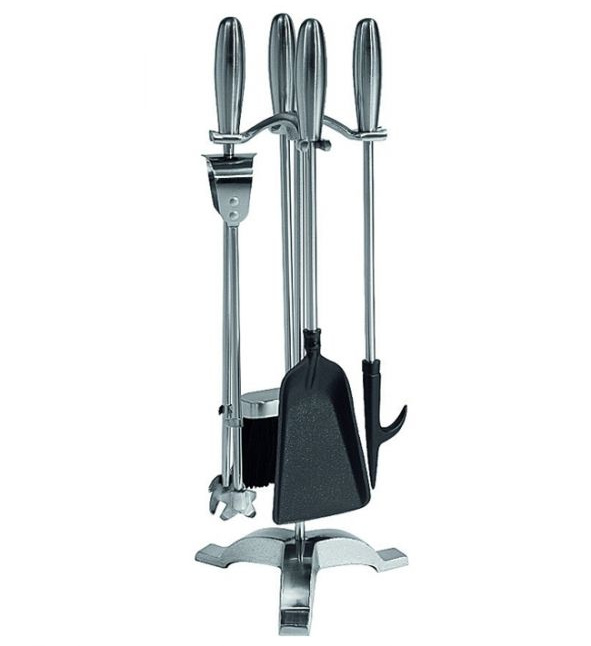
Gallery Collection Elipse Companion Set
After all, you don’t want to start cleaning your fire only to find that your ash shovel has developed a hole, or that the handle on your poker has come loose.
If you think it might be time to renew or upgrade your fireplace tools, explore our complete range here.
Clear out the firebox of ashes
Before you start using your fire again, you should clear out any ash or other debris which has accumulated in your fireplace (or has been left over since the last burning season).
It’s important that you don’t completely eradicate every single last bit of ash though. Fires burn best when there is a thin layer of ash for them to sit on. So, leave a fine layer of ash at the bottom of the firebox ahead of your first fire.
Disposing of the excess ash should be straightforward. Either sweep or hoover them up and place them in your general waste bin. Alternatively, if you have a garden, ash is perfect to add to garden beds or compost piles.
Ensure the grate/fire basket is clean
If your fireplace has a grate/fire basket - and we strongly recommend that you use one - then you should take the opportunity to make sure your grate is clean and not blocked up.
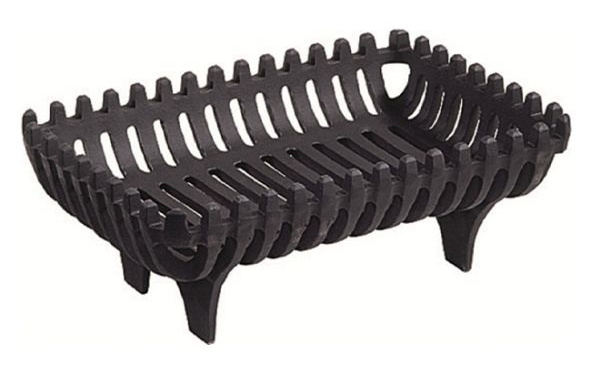
Gallery Collection Cromwell Large 18 inch Solid Fuel Fire Basket
The grate plays an important role in supplying oxygen to your fire. So, before the new burning season gets underway, you should ensure that the horizontal slats in the grate are not blocked with old pieces of burnt firewood or lumps of ash.
Stock up on firewood
Once you’ve conducted all of these checks and inspections, you want to make sure you’ve got plenty of firewood to hand.
Ideally you’ll want enough wood for your regular winter usage plus about 20 percent extra. If you find yourself in the middle of an extra cold winter and have to keep your fire burning for longer, that extra 20 percent will come in handy!
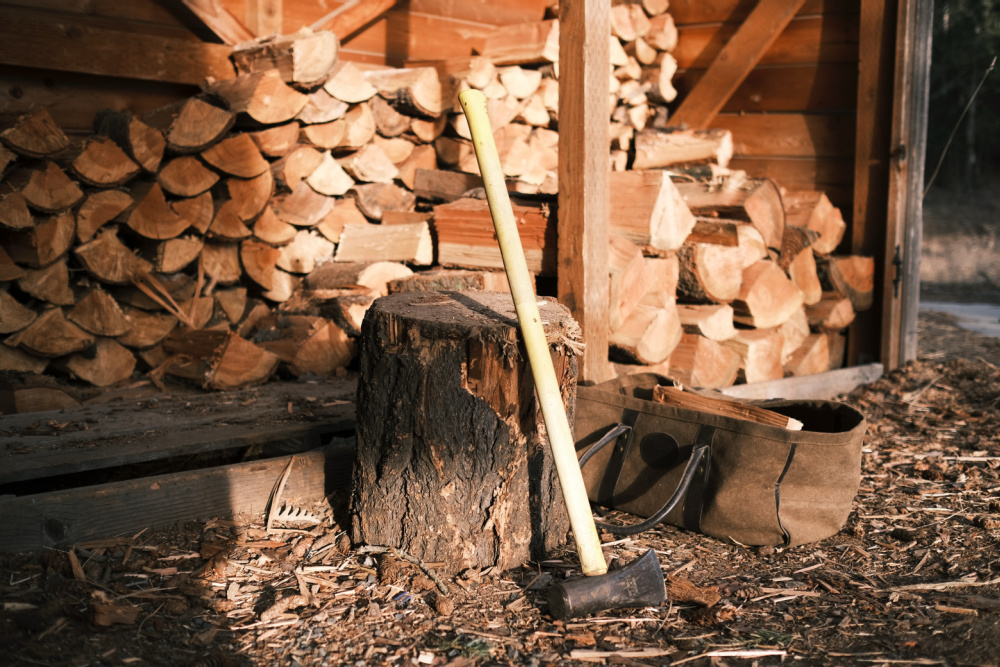
Ideally, you should buy pre-seasoned firewood which is ready to burn. However, if you’re intending to coppice your own firewood, then you’ll want to do this far in advance of needing the firewood. This is because hardwoods such as oak can take as much as one to two years to dry out and season.
When it comes to storing your firewood, it’s generally best to keep it outside of your home. This avoids any insects or pests finding their way into your home.
Just make sure that wherever you store your firewood is dry, elevated from the floor and receives plenty of fresh air.
Stock up on fire lighting materials
There are many different ways to light a fire, and everyone has their preferred method.
Whether you like to use old newspapers to get a fire started, or you prefer traditional kindling, make sure you have plenty of these materials stocked up ahead of autumn and winter.
Use the opportunity to upgrade
Just before the main burning season is the ideal time to make any upgrades to your fireplace that you may have been thinking about.
Whether it’s adding a new surround, upgrading the fire basket, or installing a new hearth or back panel, now is the time to do it. After all, you don’t want your fireplace to be out of action when it’s chilly outside.
Fireplace upgrades for autumn/winter
If you've decided that the time is right to upgrade your fireplace, then why not consider one of the following stunning insets or combination fireplaces.
Carron Toulouse Tiled Cast Iron Combination FIreplace
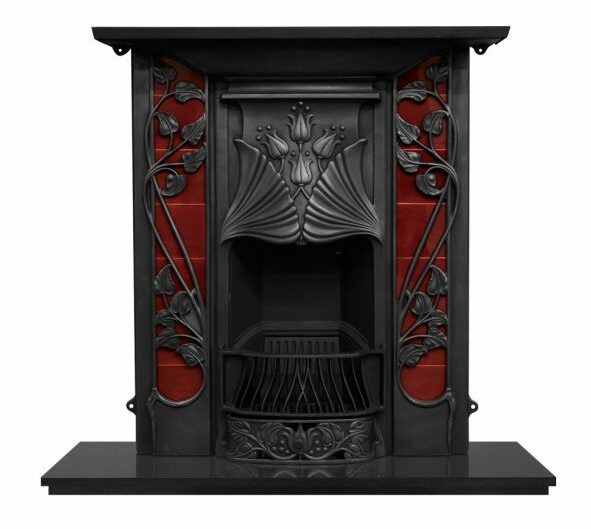
Carron Toulouse Tiled Cast Iron Combination Fireplace
Hand made in Lincolnshire by skilled craftspeople, the Carron Toulouse Tiled Cast Iron fireplace features a beautiful Art Nouveau design with four tulips and accompanying leaves that flow up each side of the fireplace and over the rich red or blue tiles.
The Carron Toulouse is available in a choice of finishes; either full polished or black and can be used either as a solid fuel fireplace or a gas or LPG fire.
Gallery Collection Lytton Cast Iron Fire Insert
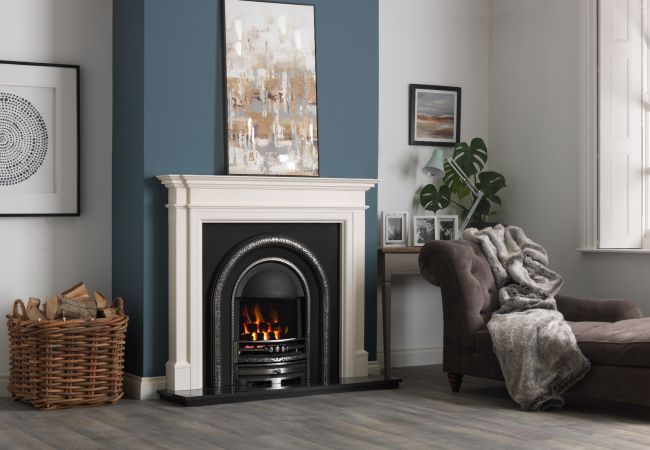
Gallery Collection Lytton Cast Iron Fire Insert
A magnificent, Victorian-inspired cast iron insert, the Gallery Collection Lytton makes a perfect fireplace for traditional and contemporary interior decors alike.
It features a decorative band around the arch and is suitable for use with either a marble or wooden fire surround. The Lytton is also available with a variety of fire options including solid fuel (wood or coal), gas or electric fire.
Gallery Collection Pembroke Cast Iron Combination Fireplace
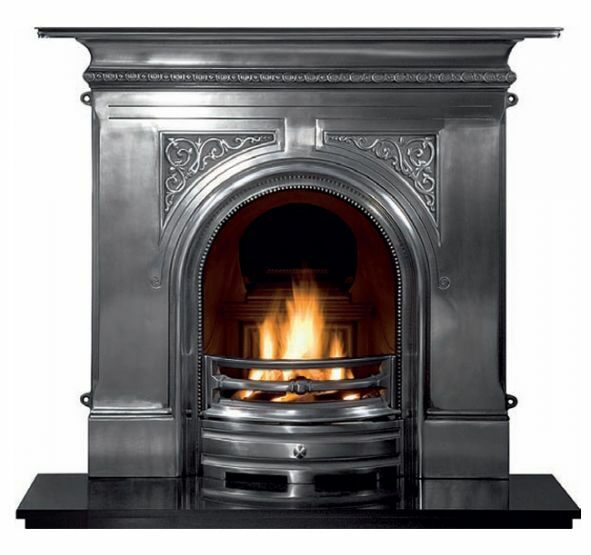
Gallery Collection Pembroke Cast Iron Combination Fireplace
As a slightly larger than usual cast iron combination fireplace, the Gallery Collection Pembroke lends itself to large, high-ceiling Victorian or Edwardian rooms. It's available in black or polished options - either of which looks stunning and will the fireplace the focal point of any room.
The Pembroke is available with a choice of fire options including solid fuel (wood or coal), gas or electric fire.
Find everything you need for your fireplace at Direct Fireplaces
Are you in need of some new fireplace tools? Perhaps it’s time for an entirely new fireplace? Whatever it is, you’ll find it at Direct Fireplaces.
Explore the Direct Fireplaces website now
For more fireplace advice and guidance, read the Direct Fireplaces blog…
How to Improve the Efficiency and Heat Output of Your Open Fireplace | What Accessories Do I Need for My Fireplace? | Guide to Buying the Right Hearth for Your Fireplace
[related_products is_auto_added="1"]admin
Latest posts by admin (see all)
- Electric Fireplace Inserts Buying Guide - March 27, 2023
- What Types of Flueless Fires Are There? - February 23, 2023
- What Are the Best Contemporary Gas Fires? - January 17, 2023

